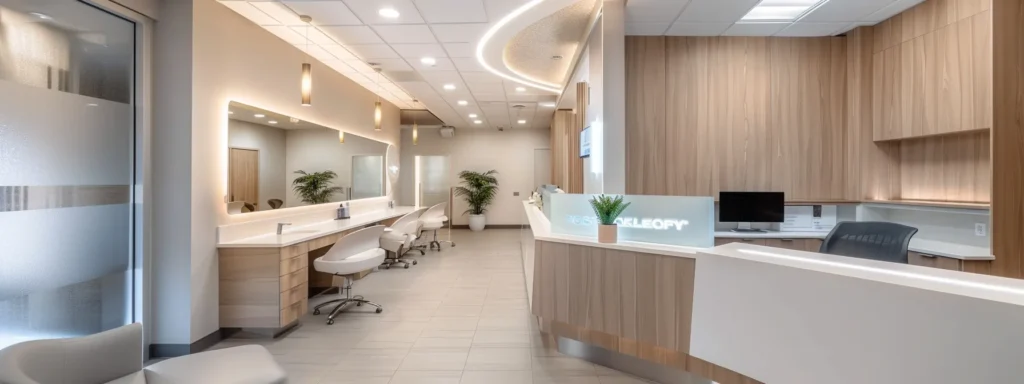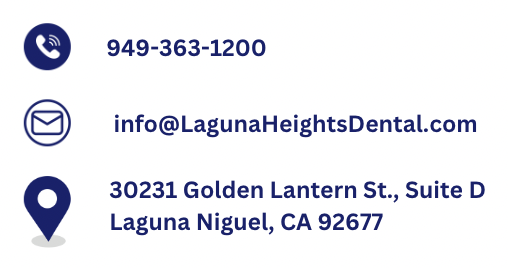Baking soda is one of the most time tested natural methods for keeping teeth looking clean and bright. Celebrated for its simplicity and affordability, it continues to be a go-to solution for individuals seeking a chemical free way to polish away surface stains. When used with care, it supports oral health while offering a convenient option for daily stain removal.
At Laguna Heights Dental, we often recommend baking soda as a complementary solution rather than a stand alone fix. It works well for managing surface level discoloration, but it is not a substitute for comprehensive dental care. This article explains how to use baking soda wisely, when to consider professional treatments, and what to avoid so your whitening routine stays safe and effective.
Clearing Up the Confusion About Safety and Effectiveness
There’s a persistent debate surrounding the use of baking soda for teeth whitening. Some believe it’s too abrasive, while others swear by its results. The truth lies in how it is used and how often. Education is key to separating fact from fiction.
Baking soda, when applied with a soft-bristled toothbrush and used just a few times per week, is gentle on enamel. The biggest concern comes from overuse or aggressive brushing techniques, which can lead to enamel wear over time. When patients follow a proper technique and frequency, baking soda can be an effective part of their stain fighting toolkit. Understanding the difference between cautious use and misuse is what makes all the difference.
Taking a balanced approach allows patients to enjoy the brightening benefits of baking soda while avoiding unnecessary damage. By staying informed, they can continue using natural remedies with confidence and support from their dental team.
Knowing What Baking Soda Can and Cannot Do
Baking soda is excellent for removing external stains caused by coffee, tea, red wine, and everyday food and drink. However, it does not address intrinsic stains that lie beneath the enamel surface. Recognizing the limits of baking soda helps prevent frustration and ensures patients don’t rely on it for results it cannot provide.
For stains that stem from deep inside the tooth structure, such as those caused by aging, trauma, or medication, professional whitening systems are the only truly effective option. Patients who notice little change after regular baking soda use may be dealing with discoloration that requires a more advanced treatment plan.
Understanding the difference between extrinsic and intrinsic staining helps patients set clear expectations. With professional input, they can craft a whitening approach that is both realistic and tailored to their unique dental needs.
Balancing Natural Remedies with Professional Care
Many patients appreciate the appeal of natural products, but it’s important to emphasize that no home remedy replaces clinical expertise. Baking soda has a valuable place in oral hygiene when used alongside a complete dental care strategy.
It is accessible, inexpensive, and compatible with most other oral health products. Yet when patients aim to significantly brighten their smile or address persistent discoloration, professional care is necessary to achieve those goals. That’s where expert guidance comes in.
At Laguna Heights Dental, we help patients integrate natural tools like baking soda into a routine that also includes in office evaluations, education, and support. This collaborative model provides the best of both worlds: nature’s simplicity with science-backed precision.
Actionable Response: Integrating Baking Soda Safely and Strategically
Incorporating baking soda into a whitening regimen starts with an evaluation of oral health. Before using it regularly, patients should check for enamel wear, dental restorations, or active sensitivity. A dentist’s input is crucial in determining whether baking soda is appropriate.
Recommended best practices include:
- Use baking soda only two to three times per week to prevent enamel erosion.
- Apply with a soft bristled toothbrush using light, circular strokes.
- Avoid pairing with acidic substances like lemon juice, which can weaken enamel.
When used as part of a broader dental hygiene plan, baking soda becomes a safe and effective tool. With support from Laguna Heights Dental, patients can develop a routine that balances natural care with modern preventive techniques.
Decision Criteria: When to Keep Using Baking Soda and When to Escalate
Sometimes baking soda is enough, and sometimes it isn’t. The choice to continue or escalate to professional whitening depends on several factors. These include treatment results, comfort levels, and the condition of the teeth and gums.
If you’ve been using baking soda consistently and are no longer seeing results, or if sensitivity has developed, it may be time to consider another approach. Intrinsic stains, color mismatch with crowns or veneers, and long standing discoloration are often best addressed by professional whitening solutions.
Assessing your whitening progress and oral health ensures your routine continues to serve your goals. With professional insight, it becomes easier to decide whether to stick with natural methods or explore more advanced care.

Support Resources: Why Guidance from a Dentist Matters
Laguna Heights Dental provides more than just cleanings and treatments. We offer guidance that empowers patients to care for their teeth with confidence. For those exploring natural whitening, our team offers education and ongoing support.
Support services include:
- Consultations to evaluate baking soda’s fit in your current hygiene routine.
- Clarification around common myths or misuses that can compromise results.
- Personalized recommendations based on your whitening goals and enamel condition.
We take a proactive role in helping you make decisions that prioritize both safety and satisfaction. With a clear plan in place, patients can enjoy natural solutions with peace of mind and professional backing.
Preventive Measures: Best Practices for Maintaining a White Smile
Whitening results last longer when paired with everyday preventive care. Baking soda supports this when combined with healthy habits that reinforce enamel strength and reduce new stains.
Our top tips for ongoing maintenance:
- Use baking soda only on non-whitening toothpaste days to avoid over-exposure.
- Rinse with water after consuming dark liquids like coffee or wine.
- Maintain biannual dental checkups to track enamel health and stain progression.
These strategies help patients get the most from their natural routines without sacrificing long-term oral health. Smart, simple changes can yield lasting results when done consistently and with care.
A Natural Ally Backed by Professional Wisdom
Baking soda has a respected place in natural oral care, but it works best when supported by education and expert advice. It offers affordable, effective stain removal for surface-level discoloration, but it cannot deliver the results of professional whitening treatments.
At Laguna Heights Dental, we help patients combine the strengths of natural solutions with trusted clinical care. If you’re interested in using baking soda to brighten your smile, we’re here to help you create a personalized, balanced plan. Let’s build a strategy that works with your goals, your lifestyle, and your long-term oral health.
Schedule your consultation Today!
Laguna Heights Dental
30231 Golden Lantern, Ste D
Laguna Niguel, CA 92677
(949) 363-1200
https://lagunaheightsdental.com/
See More Reviews From Laguna Height Dental. View information about local places in our community. Get Driving Directions to Our Practice
Frequently Asked Questions
How does baking soda whiten teeth?
Baking soda works by gently scrubbing away surface stains through mild abrasion. It also neutralizes acids in the mouth, helping reduce discoloration from everyday foods and drinks.
Is baking soda safe to use regularly?
Yes, it is safe when used correctly and in moderation. Most dentists recommend limiting use to two or three times per week with a soft-bristled brush to protect enamel.
Can baking soda replace professional whitening?
Not entirely. Baking soda helps maintain surface brightness, but it does not address deep discoloration or deliver dramatic whitening. Professional treatments provide more complete and longer-lasting results.





